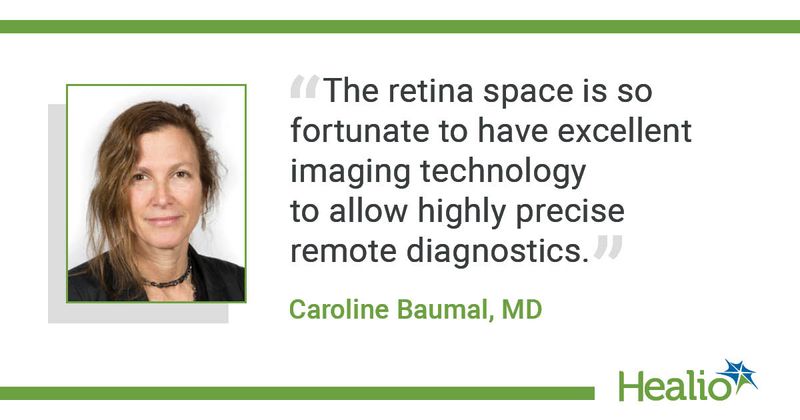What is the future of telemedicine in retina?
Click here to read the Cover Story, "Remote staffing can play a role in ophthalmology practices."
Remote screening, directed consultations and individualized office treatments
Telemedicine is defined as remote diagnosis and treatment of patients by means of telecommunications technology.

The retina space is so fortunate to have excellent imaging technology to allow highly precise remote diagnostics. Color fundus photographs have been used successfully to screen remotely for diabetic retinopathy and have even higher specificity when combined with OCT. Home OCT will be available soon to remotely monitor patients with age-related macular degeneration in an effort to identify patients earlier in need of anti-VEGF therapy.
However, retinal therapies typically require procedures such as intravitreal injection, and this usually needs to be done in person by an attending ophthalmologist. The COVID pandemic tested the retina space with regard to telemedicine and corroborated that remote review of retinal testing was accurate, but treatments still required in-person visits.
Caroline R. Baumal, MD, is a professor of ophthalmology and co-director of the retina service at the New England Eye Center, Tufts University School of Medicine, Boston.
Telemedicine and artificial intelligence
In general, telemedicine is here to stay and help us in various ways. First, it will help us with screening of patients in primary care clinics specifically for diabetic retinopathy and likely for advanced age-related macular degeneration including geographic atrophy. In addition, there are studies using telemedicine for screening of pediatric patients with retinal diseases. One day, telemedicine will definitely be a way to screen and identify patients with diseases and hopefully earlier than we can currently.

It will start with current imaging devices, such as widefield fundus cameras and OCT machines, being implanted in primary care offices. That is going be the first place we are going to see this, and we will have trained nurses take images. The technology is pretty straightforward. It has a lot of automation, such as auto-focusing, that can help us capture better images. The technology has advanced to a point now that we no longer need a trained photographer to do it. With a very short training and just a few patients worth of experience, general technicians and nurses in a primary care office can capture an image before a patient goes for a full exam.
Currently, these can be undilated images captured in office, which is especially helpful in a patient with diabetes for a full assessment which includes evaluation for diabetic retinopathy. Those images can then be fed to an ophthalmology department. They are currently being manually read, but as artificial intelligence technology advances, I can foresee AI as a way to screen and identify pathology and then refer to a physician for further analysis and treatment.
Eventually, we may see opportunities to robotize these technologies. If we start seeing that, as well as more use of AI to read imaging, telemedicine could offset some of the staffing and retention issues we are seeing today. However, as it stands now, we still need somebody taking those images, uploading them, and then on the other end, someone processing them.
Lejla Vajzovic, MD, is an associate professor of ophthalmology at Duke University Eye Center.

